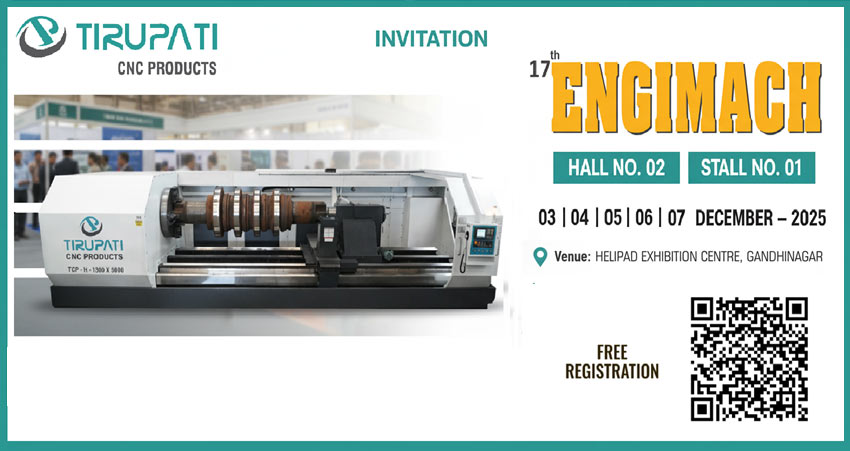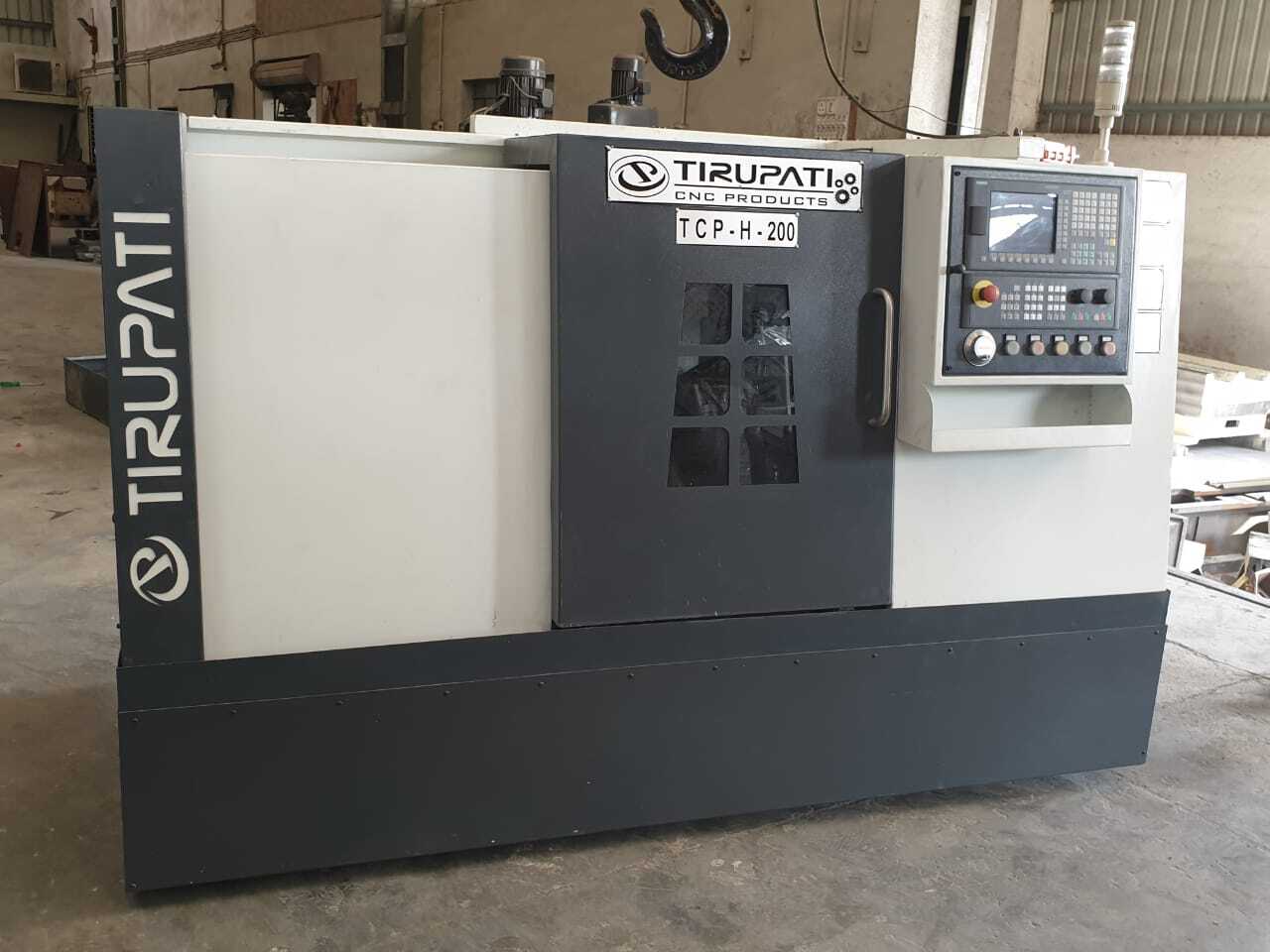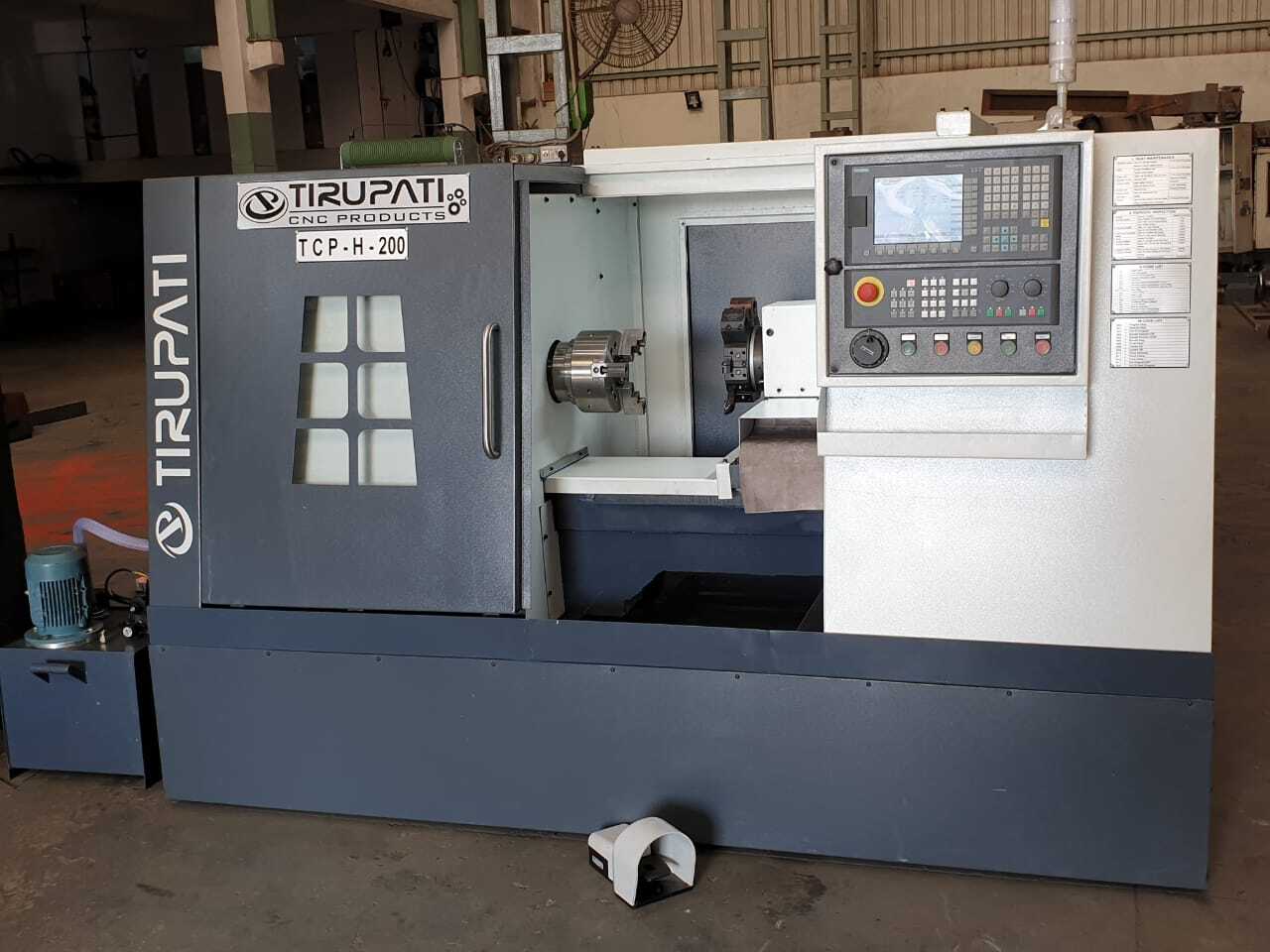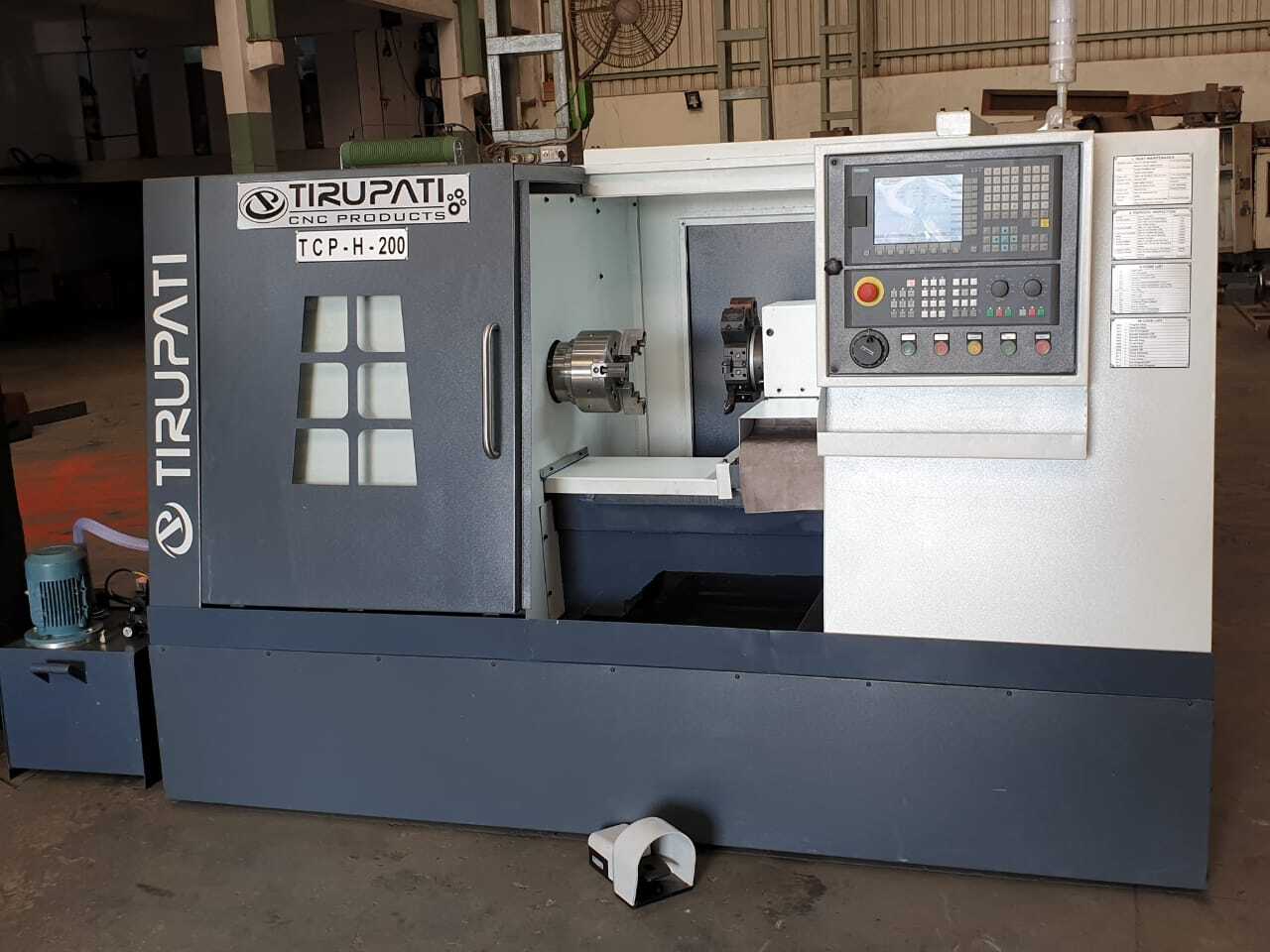Product Description
A CNC (Computer Numerical Control) lathe machine is a type of machining equipment that uses computerized controls to automate the process of shaping material with a cutting tool. In the case of a lathe, the material being shaped is typically rotated against the cutting tool to achieve the desired shape.
Working Principle of CNC Lathe Machine:
The working principle of a CNC lathe machine involves the use of computerized controls to automate the machining process. Here's a step-by-step explanation of how a CNC lathe machine operates:
1. Computer Programming:
- The process begins with the creation of a part program using CAM (Computer-Aided Manufacturing) software.
- The program specifies the toolpaths, cutting speeds, feed rates, and other parameters necessary for machining the workpiece.
2. Loading the Program:
- The part program is then loaded into the CNC lathe machine. This is often done using external storage devices, such as USB drives or through a network connection.
3. Workpiece Mounting:
- The workpiece, which is typically a cylindrical or rod-shaped material, is mounted in the lathe. It is secured using a chuck or collet.
4. Tool Setup:
- The cutting tools needed for the machining process are mounted in the tool turret or toolpost of the CNC lathe. The number of tools and their arrangement depend on the complexity of the machining operations.
5. Coordinate System Setup:
- The operator sets the origin and coordinates for the machining process. This involves defining the starting point (usually the reference point on the workpiece) and the directions of the X, Y, and Z axes.
6. Automatic Operation:
- Once the setup is complete, the CNC lathe is ready for operation. The operator initiates the machining process, and the machine follows the programmed instructions automatically.
- The spindle, which holds the workpiece, rotates, and the cutting tool moves along the specified toolpaths to remove material and shape the workpiece.
7. Feedback System:
- The CNC lathe is equipped with sensors and feedback systems that constantly monitor the machining process. These systems ensure that the machine operates within specified tolerances and makes adjustments as needed.
8. Tool Changes (if applicable):
- If the part program requires different tools for various operations, the CNC lathe can automatically change tools as specified in the program.
9. Continuous Monitoring:
- Throughout the machining process, the CNC system continuously monitors factors such as tool wear, cutting forces, and temperature to ensure optimal performance and prevent issues.
10. Completion and Unloading:
- Once the machining process is complete, the CNC lathe may automatically shut down or await further instructions.
- The machined workpiece is then unmounted, and the finished part is ready for inspection and any additional finishing processes.
Applications of CNC Lathe Machine:
CNC lathe machines are versatile tools widely used in manufacturing and various industries due to their ability to automate precision machining processes. Here are some common applications of CNC lathe machines:
1. Turning Operations:
- The primary function of a CNC lathe is turning, where the workpiece rotates on its axis, and the cutting tool removes material to create cylindrical shapes. This is used in the production of components like shafts, pins, and bushings.
2. Facing:
- CNC lathes can be used for facing operations to create flat surfaces on the ends of cylindrical workpieces. This is important for achieving precise dimensions and ensuring components fit together correctly.
3. Threading:
- CNC lathes are employed for threading operations to create screw threads on the external or internal surfaces of cylindrical workpieces. This is crucial for manufacturing components such as bolts and nuts.
4. Drilling:
- Some CNC lathes come equipped with live tooling capabilities, allowing for drilling operations. This is especially useful for creating holes and bores in the workpiece during the turning process.
5. Taper Turning:
- CNC lathes can be programmed to produce tapered surfaces on workpieces. This is important for creating components like conical shapes and tool tapers.
6. Grooving and Parting:
- CNC lathes are used for grooving and parting operations to create channels or separate a workpiece into two distinct parts. This is common in the production of small components.
7. Knurling:
- Knurling is a process where a raised pattern is produced on a workpiece for improved grip or aesthetic purposes. CNC lathes can perform knurling operations on cylindrical surfaces.
8. Prototyping:
- CNC lathes are valuable in the prototyping phase of product development. They enable the quick and accurate production of prototypes, allowing engineers and designers to test and refine their designs before mass production.
9. Batch Production:
- CNC lathe machines are well-suited for batch production of identical components. Once the program is set up, the machine can produce multiple pieces with consistent precision, reducing the time and labor required.
10. High-Precision Components:
- CNC lathes are used in the production of high-precision components required in industries such as aerospace, medical, and automotive. The accuracy and repeatability of CNC machining are crucial for meeting stringent quality standards.
11. Complex Geometry:
- With advanced programming and tooling, CNC lathes can handle complex geometries, producing intricate shapes and contours in a variety of materials.
12. Material Variety:
- CNC lathes can work with a wide range of materials, including metals, plastics, and composites, making them suitable for diverse manufacturing applications.
- CNC lathe machines offer flexibility and efficiency in producing a variety of components with high precision, making them essential in modern manufacturing processes.
Frequently Asked Questions:
Q. What is a CNC Lathe Machine?
Ans: A CNC lathe machine is a computer-controlled machining tool used for shaping materials such as metal, plastic, or wood. It operates by rotating a workpiece and cutting it with a stationary cutting tool.
Q. How does a CNC Lathe Work?
Ans: CNC lathes work by following a programmed set of instructions to move the cutting tool along the surface of a rotating workpiece. The CNC system controls the movements with high precision to achieve the desired shape and dimensions.
Q. What are the Main Components of a CNC Lathe?
Ans: The main components of a CNC lathe include the spindle, chuck or collet for holding the workpiece, tool turret or toolpost for holding cutting tools, bed, and various motors and actuators for movement.
Q. What Materials Can CNC Lathes Work With?
Ans: CNC lathes can work with a variety of materials, including metals (such as steel, aluminum, and brass), plastics, wood, and composites.
Q. What Types of Operations Can a CNC Lathe Perform?
Ans: CNC lathes can perform operations such as turning, facing, threading, drilling, grooving, parting, and knurling, among others.
Q. How is a CNC Lathe Programmed?
Ans: CNC lathes are programmed using CAM (Computer-Aided Manufacturing) software. The programmer specifies toolpaths, speeds, feeds, and other parameters to create a part program, usually written in G-code.
Q. What is G-code?
Ans: G-code is a programming language used to control CNC machines. It consists of a series of commands that tell the machine how to move, turn, and control various operations.
Q. Can CNC Lathes Work on Complex Geometries?
Ans: Yes, advanced CNC lathes with multi-axis capabilities and live tooling can work on complex geometries, creating intricate shapes and contours.
Q. What is Live Tooling on a CNC Lathe?
Ans: Live tooling refers to the ability of a CNC lathe to perform additional operations, such as milling and drilling, using tools mounted on the turret while the workpiece is rotating.
Q. Are CNC Lathes Only Used for Large-scale Production?
Ans: No, CNC lathes are versatile and can be used for both large-scale production and small batch production. They are also commonly used in prototyping.
Q. How is Tool Change Handled in CNC Lathes?
Ans: Tool changes in CNC lathes can be automatic. The machine is equipped with a tool turret or tool changer that can hold multiple tools, and the CNC program specifies when and which tool to use.
Q. What Are the Advantages of CNC Lathes?
Ans: The advantages of CNC lathes include high precision, repeatability, efficiency, and the ability to automate complex machining processes.
Q. Can CNC Lathes Be Used for 3D Printing?
Ans: No, CNC lathes are subtractive manufacturing machines that remove material to create shapes. 3D printing, on the other hand, is an additive manufacturing process.
Q. What Maintenance is Required for CNC Lathes?
Ans: Regular maintenance includes checking and lubricating moving parts, inspecting and replacing cutting tools, and ensuring that the CNC control system is functioning properly.
Q. Can CNC Lathes Work with Different Workpiece Shapes?
Ans: While CNC lathes are well-suited for cylindrical and symmetrical workpieces, they can also handle non-cylindrical shapes with the use of additional tooling and techniques.







